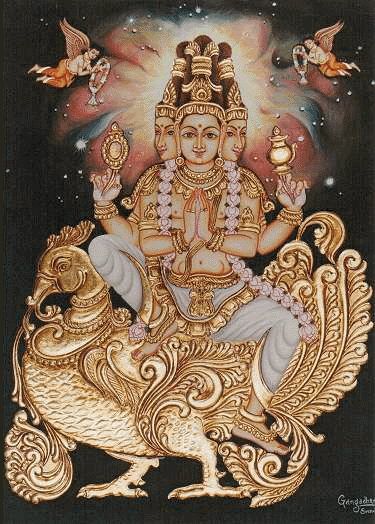 ਸਤਿਗੁਰਬਚਨਕਮਾਵਣੇਸਚਾਏਹੁਵੀਚਾਰੁ॥
ਸਤਿਗੁਰਬਚਨਕਮਾਵਣੇਸਚਾਏਹੁਵੀਚਾਰੁ॥

 ਸਤਿਗੁਰਬਚਨਕਮਾਵਣੇਸਚਾਏਹੁਵੀਚਾਰੁ॥
ਸਤਿਗੁਰਬਚਨਕਮਾਵਣੇਸਚਾਏਹੁਵੀਚਾਰੁ॥

|
Do Swans (Hans) really eat pearls (Moti)? September 19, 2010 10:41AM |

Quote
Ang 960 - Sri Guru Granth Sahib jee
ਹੰਸਾ ਹੀਰਾ ਮੋਤੀ ਚੁਗਣਾ ਬਗੁ ਡਡਾ ਭਾਲਣ ਜਾਵੈ ||
The swans peck at the diamonds and pearls, while the crane chases after frogs.
Quote
Bhai Gurdaas Jee
ਲਹਰੀ ਅੰਦਰਿ ਹੰਸੁਲੇ ਮਾਣਕ ਮੋਤੀ ਚੁਗਿ ਚੁਗਿ ਖਾਹੀ||
From the waves of the pond, the swans pick up only pearls and gems to eat.
|
Re: Do Swans (Hans) really eat pearls (Moti)? September 19, 2010 02:13PM |
|
Re: Do Swans (Hans) really eat pearls (Moti)? September 19, 2010 06:31PM |
|
Re: Do Swans (Hans) really eat pearls (Moti)? September 19, 2010 11:01PM |
|
Re: Do Swans (Hans) really eat pearls (Moti)? September 20, 2010 01:02AM |
|
Re: Do Swans (Hans) really eat pearls (Moti)? September 20, 2010 08:29AM |
|
Re: Do Swans (Hans) really eat pearls (Moti)? September 20, 2010 10:41AM |

|
Re: Do Swans (Hans) really eat pearls (Moti)? September 20, 2010 01:21PM |


|
Re: Do Swans (Hans) really eat pearls (Moti)? September 20, 2010 03:41PM |
|
Re: Do Swans (Hans) really eat pearls (Moti)? September 20, 2010 05:26PM |

 formed inside the oyster .
formed inside the oyster .|
Re: Do Swans (Hans) really eat pearls (Moti)? September 20, 2010 07:27PM |
|
Re: Do Swans (Hans) really eat pearls (Moti)? September 20, 2010 11:29PM |
|
Re: Do Swans (Hans) really eat pearls (Moti)? September 21, 2010 09:19AM |
Quote
Phen ji 1kaur
but the dust and sand and grit isn't what makes the pearl... the lining of the mollusk makes the pearl.
From this link: [www.ehow.com]Quote
Natural Pearls
Natural Pearls
# In nature a pearl forms when some type of irritant enters the mussel or oyster. The irritant may be a food particle, a piece of shell, bacteria or even a piece of sand. The protective process begins. Nacre is secreted in layers around the irritant. The result is a pearl.
|
Re: Do Swans (Hans) really eat pearls (Moti)? September 21, 2010 10:54AM |
|
Re: Do Swans (Hans) really eat pearls (Moti)? September 21, 2010 12:44PM |
|
Re: Do Swans (Hans) really eat pearls (Moti)? September 21, 2010 09:12PM |
|
Re: Do Swans (Hans) really eat pearls (Moti)? September 22, 2010 12:58AM |
|
Re: Do Swans (Hans) really eat pearls (Moti)? September 22, 2010 02:23AM |

|
Re: Do Swans (Hans) really eat pearls (Moti)? September 22, 2010 12:21PM |
|
Re: Do Swans (Hans) really eat pearls (Moti)? September 22, 2010 01:50PM |
|
Re: Do Swans (Hans) really eat pearls (Moti)? September 22, 2010 03:22PM |
|
Re: Do Swans (Hans) really eat pearls (Moti)? September 22, 2010 03:43PM |
Quote
There is so much information available on fresh water pearls, I am doubtful, if I am able to understand what Bhein Ji has explained.
|
Re: Do Swans (Hans) really eat pearls (Moti)? September 24, 2010 12:34PM |



|
Re: Do Swans (Hans) really eat pearls (Moti)? September 24, 2010 09:10PM |
|
Re: Do Swans (Hans) really eat pearls (Moti)? October 10, 2010 11:42AM |